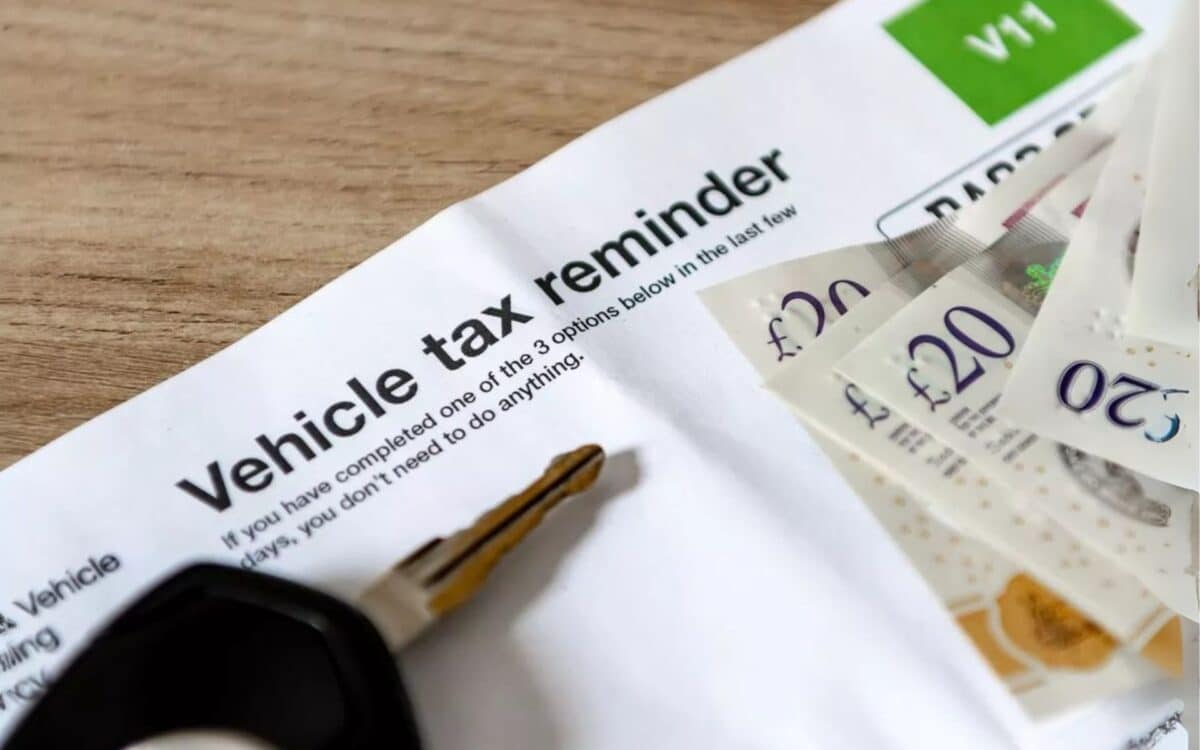The Automobile Association (AA) has issued a warning to small and family car owners about a potential £150 increase in their annual vehicle excise duty (VED) if they decide to upgrade their vehicles.
This change, which took effect on April 1, 2022, is part of a broader shift in the UK’s car tax system and is expected to affect millions of drivers across the country.
As highlighted by Manchester Evening News, these updated rules are designed to encourage more environmentally friendly vehicles but will likely increase the financial burden for those upgrading to newer models.
New Tax System and How it Affects Drivers
The revised car tax rules take into account the carbon dioxide (CO2) emissions of a vehicle as well as its registration date. Cars registered between March 1, 2001, and March 31, 2017, may currently pay as little as £20 annually if their emissions do not exceed 100g/km of CO2. However, for those upgrading to vehicles registered post-April 1, 2017, the standard car tax rate will increase to £195 per year, regardless of the vehicle’s emissions.
Jack Cousens, head of roads policy at The AA, commented on the impact of these changes:
“VED changes and future increases threaten a major financial shock to the finances of millions of car owners whose vehicles are still paying VED under the 2001-2017 CO2-banded system.“
Financial Implications of the Changes
These adjustments in the VED system could place a financial strain on many UK drivers, particularly those upgrading from older, more fuel-efficient vehicles.
Small and family cars with low emissions could face an increase of up to £150 annually if drivers decide to upgrade to a newer model. On the other hand, higher emissions vehicles, particularly those emitting over 255g/km of CO2, will now incur an annual tax rate of £760.
According to the AA’s calculations, the average driver could end up spending £650 annually when combining fuel duty and the revised road tax.
First-Year Car Tax Rates (Showroom Tax)
In addition to the standard car tax increases, the first-year car tax—commonly known as the showroom tax—has also risen. This is the tax paid in the first year of owning a new vehicle. The new rates are as follows:
- Electric vehicles (EVs): From April 2025, owners of EVs registered on or after April 1, 2017, will pay £195 annually in car tax.
- EVs registered between March 1, 2001, and March 31, 2017 will pay £20 annually.
- First-year tax for cars emitting 1-50g/km of CO2: Has risen from £10 to £110.
- First-year tax for cars emitting 51-75g/km of CO2: Has risen from £30 to £130.
- First-year tax for cars emitting 76g/km of CO2 and above: Rates have doubled for all cars in this category.
- For a car emitting more than 255g/km of CO2, the first-year car tax rate has increased from £2,745 to £5,490.
Electric Vehicles Now Subject to Car Tax
For the first time, electric vehicles will be subject to car tax. However, EVs registered between March 1, 2001, and March 31, 2017, will continue to pay the previous rate of £20 annually. From April 2025, EVs registered after April 1, 2017, will face the standard £195 annual tax.
Starting April 2025, the first-year car tax rates will see significant increases, especially for vehicles with high CO2 emissions. Below are some of the updated rates:
- 0g/km (Electric vehicles): £0 now, rising to £10
- 1-50g/km: £10 now, rising to £110
- 51-75g/km: £30 now, rising to £130
- 76-90g/km: £135 now, rising to £270
- 91-100g/km: £175 now, rising to £350
- 101-110g/km: £195 now, rising to £390
- 111-130g/km: £220 now, rising to £440
- 131-150g/km: £270 now, rising to £540
- 151-170g/km: £680 now, rising to £1,360
- 171-190g/km: £1,095 now, rising to £2,190
- 191-225g/km: £1,650 now, rising to £3,300
- 226-255g/km: £2,340 now, rising to £4,680
- 255+g/km: £2,475 now, rising to £5,490
For vehicles registered between March 1, 2001, and March 31, 2017, the following rates will apply from April 2025:
- Up to 100g/km CO2: £0 now, rising to £20
- 101-110g/km: £20 (no change)
- 111-120g/km: £35 (no change)
- 121-130g/km: £160, rising to £165
- 131-140g/km: £190, rising to £195
- 141-150g/km: £210, rising to £215
- 151-165g/km: £255, rising to £265
- 166-175g/km: £305, rising to £315
- 176-185g/km: £335, rising to £345
- 186-200g/km: £385, rising to £395
- 201-225g/km: £415, rising to £430
- 226-255g/km: £710, rising to £735
- 255+g/km: £735, rising to £760
While these tax changes are part of a broader move towards a greener fleet of vehicles, they will likely result in increased costs for many drivers. Those with older, low-emission cars who are upgrading to newer models may find their motoring costs significantly higher. With both fuel duty and VED rates set to rise, many drivers may need to reassess their vehicle choices in the years ahead.









